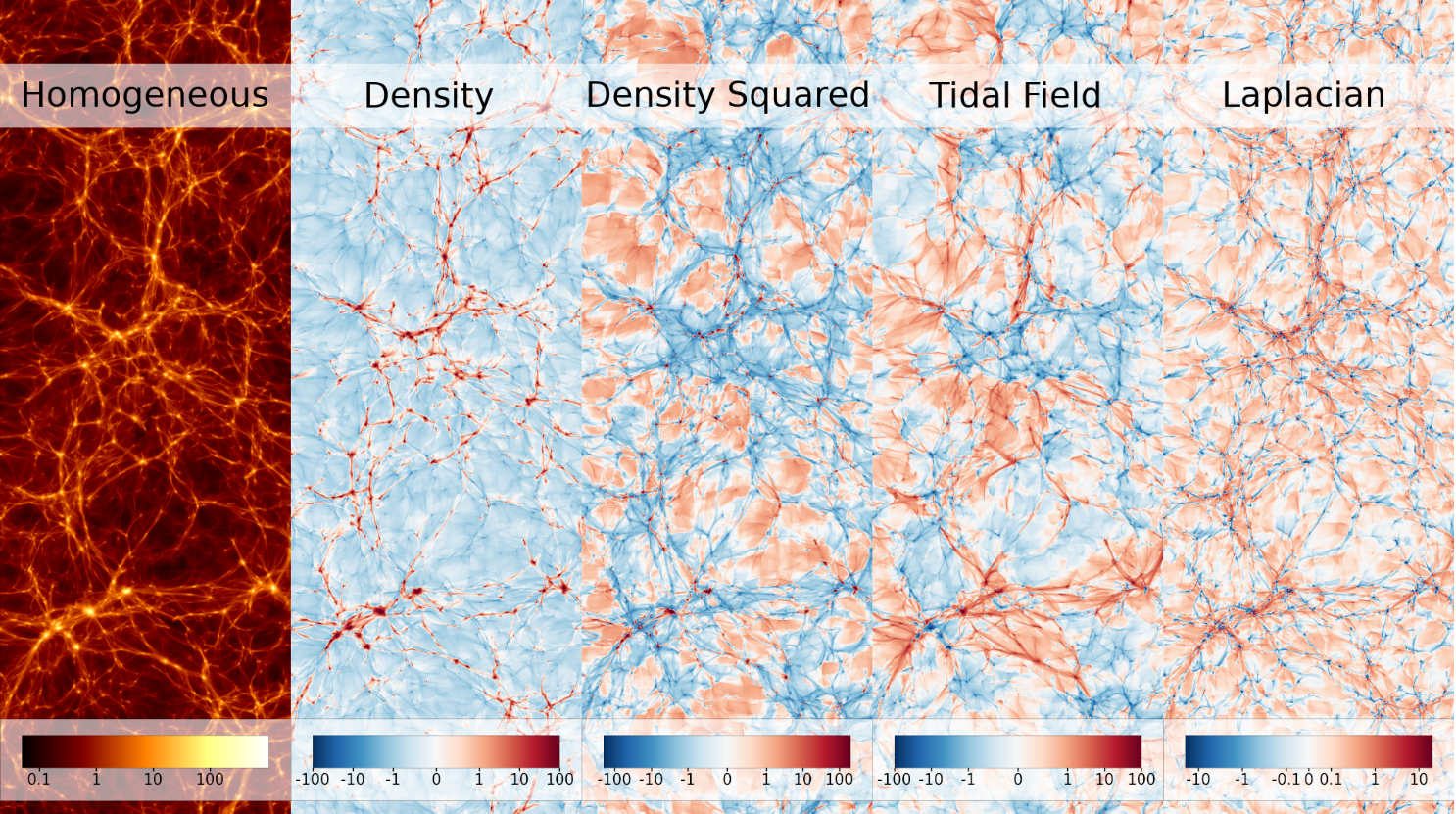Modelling luminous tracers in the observed spatial distribution of galaxies and quasars
There are numerous ongoing observational campaigns that will take on the wealth of information encoded in the clustering of matter in the universe. These observations will map the position and shapes of hundreds of millions of galaxies up to tens of thousands of square degrees. Although it will be crucial to keep statistical uncertainties and observational systematic errors under control, the actual limitation in exploiting the surveys will arise from the precision with which the observed distribution of the luminous tracers can be modelled.

The observed spatial distribution of galaxies and quasars offers an extremely valuable window to the physics of the universe. For instance, their clustering as a function of scale depends on the early universe physics, where properties of the primordial fluctuation as well as the parameters of the cosmological model leave distinctive signatures.
Similarly, the relation between cosmic velocities and densities, encoded in the so-called redshift space distortions, offers a pathway to constrain the nature of gravity and the growth of structure. Finally, baryonic acoustic oscillations can be employed as a standard ruler to measure the expansion history of the universe, offering an opportunity to better constrain the properties of dark energy.
The challenge of modelling galaxy clustering arises from the nonlinearity of the physics involved. Although the early seeds of structure formation can be predicted accurately and efficiently using linearized Bolztmann-Einstein equations, the subsequent gravitational evolution will create nonlinearities which will dominate on small scales. Galaxies and quasars are expected to form in particular regions of the universe with an efficiency that depends on the details of the galaxy formation physics involved.
The most accurate way to follow all these processes is provided by numerical simulations. In these, fluctuations in the early universe are represented by a set of 𝑁-body particles which are then evolved, solving their equations of motion. But simulations are computationally expensive, thus it is typically not possible to carry them out for more than a handful of different choices of cosmological parameters.
Another problem that arises from a potential modelling of galaxy clustering from numerical simulation is related to galaxy formation. Although there has been great progress in understanding the formation of galaxies, correlations with halo properties and the impact of various processes, predictions for galaxy properties are still uncertain and model dependent. This has the drawback that, when compared to observations, small uncertainties in galaxy modelling could heavily bias cosmological constraints. Optimizations would add much higher computational demands, and, still, a poor or incomplete modelling of galaxy properties could still lead to biased cosmological inferences.
Perturbation theory offers a very attractive alternative. By solving analytically the relevant fluid equations, predictions for the distribution of matter down to quasilinear scales can be obtained efficiently and with control of theoretical uncertainties. Including all possible dependences to a given order allowed by symmetries makes it possible to extend the predictions for any biased tracers, without making an explicit connection with particular galaxy formation physics. Recent advances in these fields have significantly improved the accuracy of these predictions, but not enough for the accuracy expected from future galaxy surveys.
Now, a team of researchers combines 1 both approaches – numerical simulations and perturbation theory – to create a framework that inherits the accuracy of numerical simulations with the flexibility of a perturbative bias expansion, which can reach even small nonlinear scales while being agnostic to galaxy formation physics and details of any given particular observational surveys. This approach has the potential to accurately describe galaxy clustering down to smaller scales than those typically reached by perturbation theory.
The researchers able to do this by combining the benefits of several recent developments. On the simulation side, they employ large 𝑁-body simulations, with accurate force and mass resolution, which have significant noise suppression by using special initial conditions, and have been carefully designed to be used in combinations with cosmology-rescaling algorithms. These allow to densely cover a target parameter space with the equivalent of hundreds to thousands of simulations. They combine these with feed forward neural networks which allow to quickly predict non-linear fields while varying any cosmological parameter – including neutrinos and dynamical dark energy – within defined regions in cosmological parameter space.
On the perturbative side, they use a Lagrangian bias expansion up to second order which captures dependences with the local density and tidal fields, and that includes a higher-order derivative bias parameters, capturing the non-locality of the galaxy formation process. Using the nonlinear displacement field of the rescaled simulations the Lagrangian bias descriptions are advected to Eulerian space where the different fields can be combined to make predictions for the non-linear power spectrum of biased tracers.
The scientists anticipate this approach will be valuable for studying Lagrangian biases from realistic galaxy mock samples. Its applications could be extended also to any problem in which the knowledge of the fully nonlinear clustering of each of these Lagrangian fields is required, as for example in the modelling of galaxy-galaxy lensing. They also expect that an extension of this emulator to redshift space would provide us with an unprecedented tool to constrain cosmology from galaxy clustering.
Author: César Tomé López is a science writer and the editor of Mapping Ignorance
Disclaimer: Parts of this article may have been copied verbatim or almost verbatim from the referenced research paper/s.
References
- Matteo Zennaro, Raul E. Angulo, Marcos Pellejero-Ibáñez, Jens Stücker, Sergio Contreras, and Giovanni Aricò (2023) The BACCO simulation project: biased tracers in real space Monthly Notices of the Royal Astronomical Society doi: 10.1093/mnras/stad2008 ↩